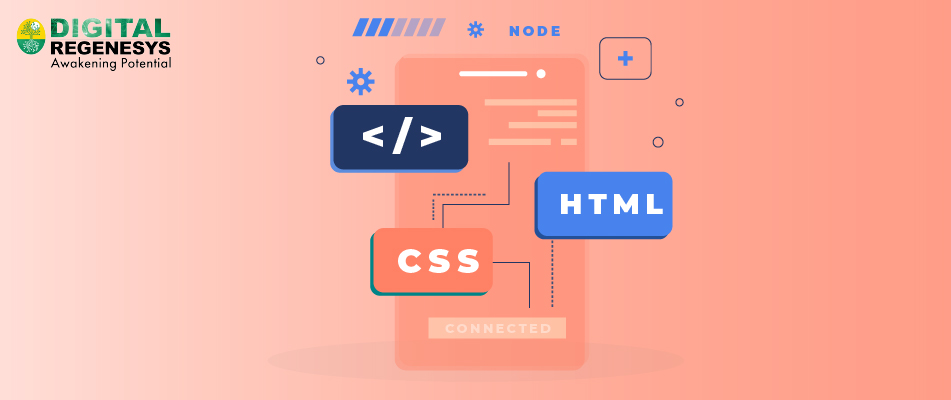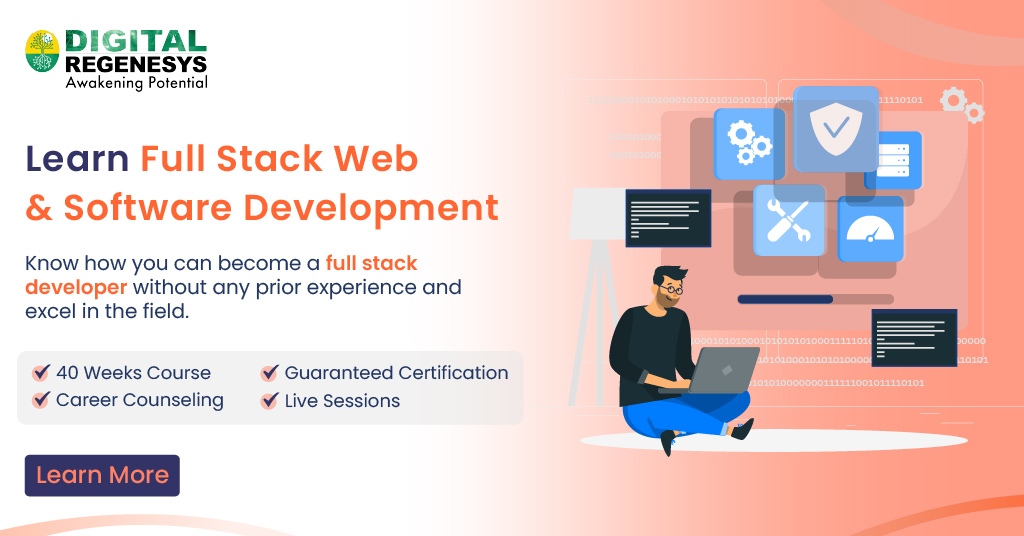How do I Become a Full Stack Developer with No Experience?

In today’s tech-driven world, the demand for skilled developers, especially full stack developers, is at an all-time high. With businesses across industries embracing digital transformation, the role of full stack developers has become indispensable. However, if you’re someone with no prior experience in programming or development, breaking into the field might seem challenging. Fear not!
This article will walk you through the step-by-step process of becoming a full stack developer from scratch.
Table Of Contents
- Understanding the Full-Stack Landscape
- Choose Your Learning Path
- Build Your Skillset
- Practice More
- Showcase Your Skills
- Conclusion
Understanding the Full-Stack Landscape
Understanding the full-stack landscape is crucial before getting into its technical aspects. Full stack development encompasses both front-end and back-end aspects, requiring proficiency in diverse technologies.
- Front-End Development: This is what users see and interact with. Languages like HTML, CSS, and JavaScript are the building blocks, while frameworks like React or Angular enhance functionality.
- Back-End Development: This is the behind-the-scenes magic. Languages like Python, Java, or Ruby power the application logic, interact with databases and handle server-side operations.
- Databases: These store and manage the application’s data. Popular options include MySQL, PostgreSQL, and MongoDB.
Overall, the full stack landscape is vast and continuously evolving, with new technologies and frameworks emerging regularly. Aspiring full stack developers must be willing to stay updated with the latest industry trends, continuously learn new skills, and adapt to changing technologies to excel in this dynamic field. By understanding the full-stack landscape and mastering the relevant technologies, aspiring developers can begin a rewarding career journey in full stack development.
Choose Your Learning Path
When becoming a full stack developer with no prior experience, selecting the right learning path is crucial.
- Self-Directed Learning: Use the resources available online. Platforms like FreeCodeCamp, Coursera, and Digital Regenesys offer interactive courses and tutorials. Explore libraries and documentation to solidify your understanding.
The benefit: flexibility and cost-effectiveness. The drawback: it requires strong self-discipline and time management.
- Coding Bootcamps: These intensive programmes offer a structured curriculum, often with career support services. They can fast-track your learning in a few months.
The benefit: immersive learning and career guidance. The drawback: significant cost and time commitment.
- Computer Science Degree: While not essential, a CS degree provides a strong foundation in algorithms, data structures, and software engineering principles. The benefit: a well-rounded education and potential internship opportunities. The drawback: time-consuming and expensive.
Build Your Skillset
Regardless of your chosen path, here’s a suggested learning sequence:
- Front-End Fundamentals: Master the foundational languages – HTML, CSS, and JavaScript. HTML structures the content, CSS styles the presentation, and JavaScript adds interactivity. Numerous online tutorials and interactive playgrounds can get you started.
- Deep Dive into Front-End Frameworks: Once comfortable with the basics, explore popular JavaScript frameworks like React, Angular, or Vue.js. These streamline front-end development, making complex tasks easier.
- Back-End Development Languages: Choose a back-end language like Python, Java, or Ruby. Each has its strengths – Python is known for readability, Java for enterprise applications, and Ruby for web development. Online full stack development certificate courses and tutorials can guide you.
- Database Management: Learn how to interact with databases using SQL (Structured Query Language). This allows you to store, retrieve, and manipulate application data. MySQL and PostgreSQL are popular options with ample learning resources.
- Version Control with Git: Git is an essential tool for managing your codebase. It allows you to track changes, collaborate with others, and revert to previous versions. Platforms like GitHub integrate seamlessly with Git.
Practice More
Theoretical knowledge is valuable, but practical application is key. Here’s how to solidify your skills:
- Start Small: Begin with simple personal projects. Build a to-do list app, a portfolio website, or a clone of a simple existing application. This allows you to experiment and gain confidence.
- Contribute to Open Source Projects: The open-source community welcomes contributions. Find projects on GitHub that align with your skillset and start contributing. This exposes you to real-world codebases and collaboration practices.
- Participate in Hackathons: Hackathons are coding competitions where developers collaborate on projects within a time limit. They’re a fantastic way to test your skills, learn new technologies, and network with other developers.
Showcase Your Skills
A strong portfolio is your calling card to potential employers. Here’s how to make it shine:
- Host Your Projects: Use platforms like GitHub Pages or a personal website to showcase your work. Ensure your code is well-commented and readable.
- Highlight the Problem You Solved: Explain the purpose of each project and the challenges you addressed. This showcases your problem-solving abilities.
- Quantify Your Achievements: Did your project improve user engagement? Reduce loading times? Highlight any measurable impacts.

Conclusion
In conclusion, while becoming a full stack developer with no prior experience may seem like a daunting task, it’s entirely achievable with dedication, perseverance, and the right approach. By following the steps outlined in this guide, continuously learning, and embracing opportunities for growth, you can embark on a rewarding career journey in full stack development. Remember, the key is to stay focused, keep coding, and never stop learning. Good luck on your journey to becoming a full stack developer!
You can learn more about Digital Regenesys’s Full Stack Web & Software Development Course here.
FAQs – Frequently Asked Questions: How do I become a full stack developer with no experience?
Q.1 What is a full stack developer?
A.1 A full stack developer is proficient in both front-end and back-end development, capable of working on all layers of a web application.
Q.2 Do I need a full stack development certificate to become a full stack developer?
A.2 While having a full stack development certificate can be beneficial, it’s not always necessary. Many developers acquire the necessary skills through self-learning, online courses, bootcamps, and practical experience.
Q.3 How long does it take to become a full stack developer with no experience?
A.3 The timeline varies based on individual learning speed and dedication. With consistent effort, it can take anywhere from a few months to a year to acquire the necessary skills.
Q.4 How can I gain practical experience as a beginner full stack developer?
A.4 Participate in internships, freelance projects, or contribute to open-source projects. These experiences provide valuable industry exposure and hands-on learning opportunities.
Q.5 What are the benefits of obtaining a full stack web development certificate?
A.5 A full stack web development certificate can provide formal recognition of your skills and knowledge in both front-end and back-end development. It may enhance your credibility with employers and increase your chances of securing job opportunities in the field.
Q.6 Where can I find full stack web development certification programmes?
There are numerous online platforms and educational institutions offering full stack web development certification programmes. Look for reputable programmes that cover a wide range of technologies and provide hands-on learning opportunities.
Last Updated: 19 March 2024
